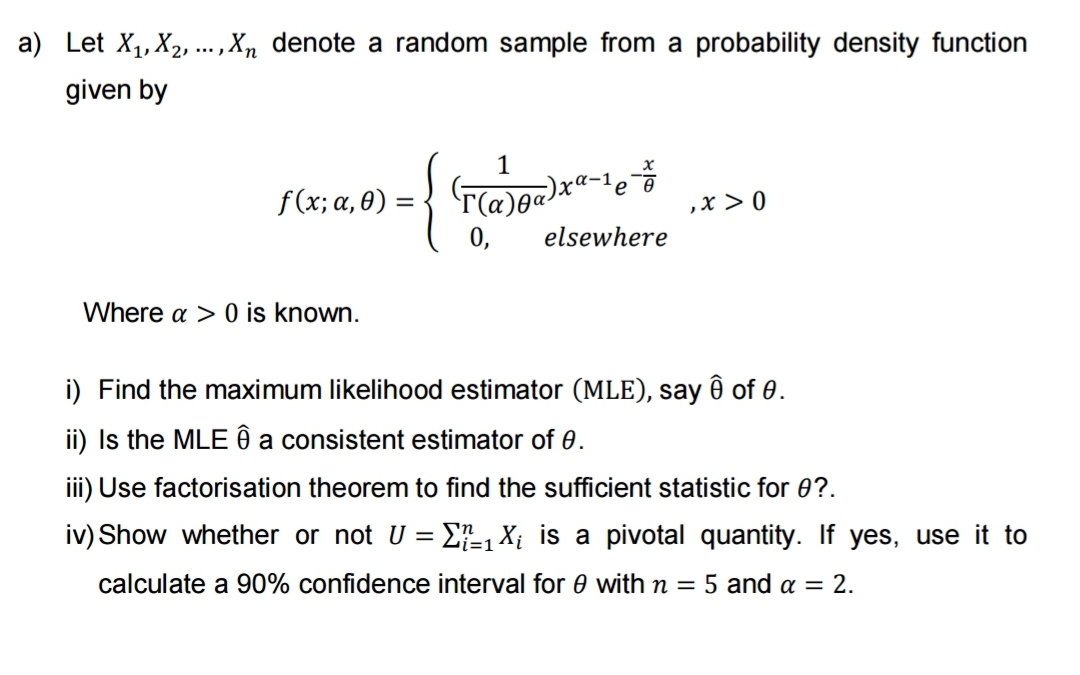a) Let X₁, X₂, ..., Xn denote a random sample from a probability density function given by 1 f(x; a,0) = (T(a)@ª)xª-¹e ,x>0 Where a > 0 is known. x == 0, elsewhere i) Find the maximum likelihood estimator (MLE), say ê of 0. ii) Is the MLE ê a consistent estimator of 0. iii) Use factorisation theorem to find the sufficient statistic for 0?.
a) Let X₁, X₂, ..., Xn denote a random sample from a probability density function given by 1 f(x; a,0) = (T(a)@ª)xª-¹e ,x>0 Where a > 0 is known. x == 0, elsewhere i) Find the maximum likelihood estimator (MLE), say ê of 0. ii) Is the MLE ê a consistent estimator of 0. iii) Use factorisation theorem to find the sufficient statistic for 0?.
Algebra & Trigonometry with Analytic Geometry
13th Edition
ISBN:9781133382119
Author:Swokowski
Publisher:Swokowski
Chapter10: Sequences, Series, And Probability
Section10.8: Probability
Problem 31E
Related questions
Question

Transcribed Image Text:a) Let X₁, X₂, ..., Xn denote a random sample from a probability density function
given by
f(x; α,0) =
Where a > 0 is known.
1
(T(a)ṇa)xª ,x > 0
0, elsewhere
+
e
i) Find the maximum likelihood estimator (MLE), say ô of 0.
ii) Is the MLE ê a consistent estimator of 0.
iii) Use factorisation theorem to find the sufficient statistic for 0?.
iv) Show whether or not U = ₁X₁ is a pivotal quantity. If yes, use it to
=1
calculate a 90% confidence interval for 0 with n = 5 and a = 2.
Expert Solution
This question has been solved!
Explore an expertly crafted, step-by-step solution for a thorough understanding of key concepts.
Step by step
Solved in 5 steps with 3 images

Recommended textbooks for you

Algebra & Trigonometry with Analytic Geometry
Algebra
ISBN:
9781133382119
Author:
Swokowski
Publisher:
Cengage

Algebra & Trigonometry with Analytic Geometry
Algebra
ISBN:
9781133382119
Author:
Swokowski
Publisher:
Cengage